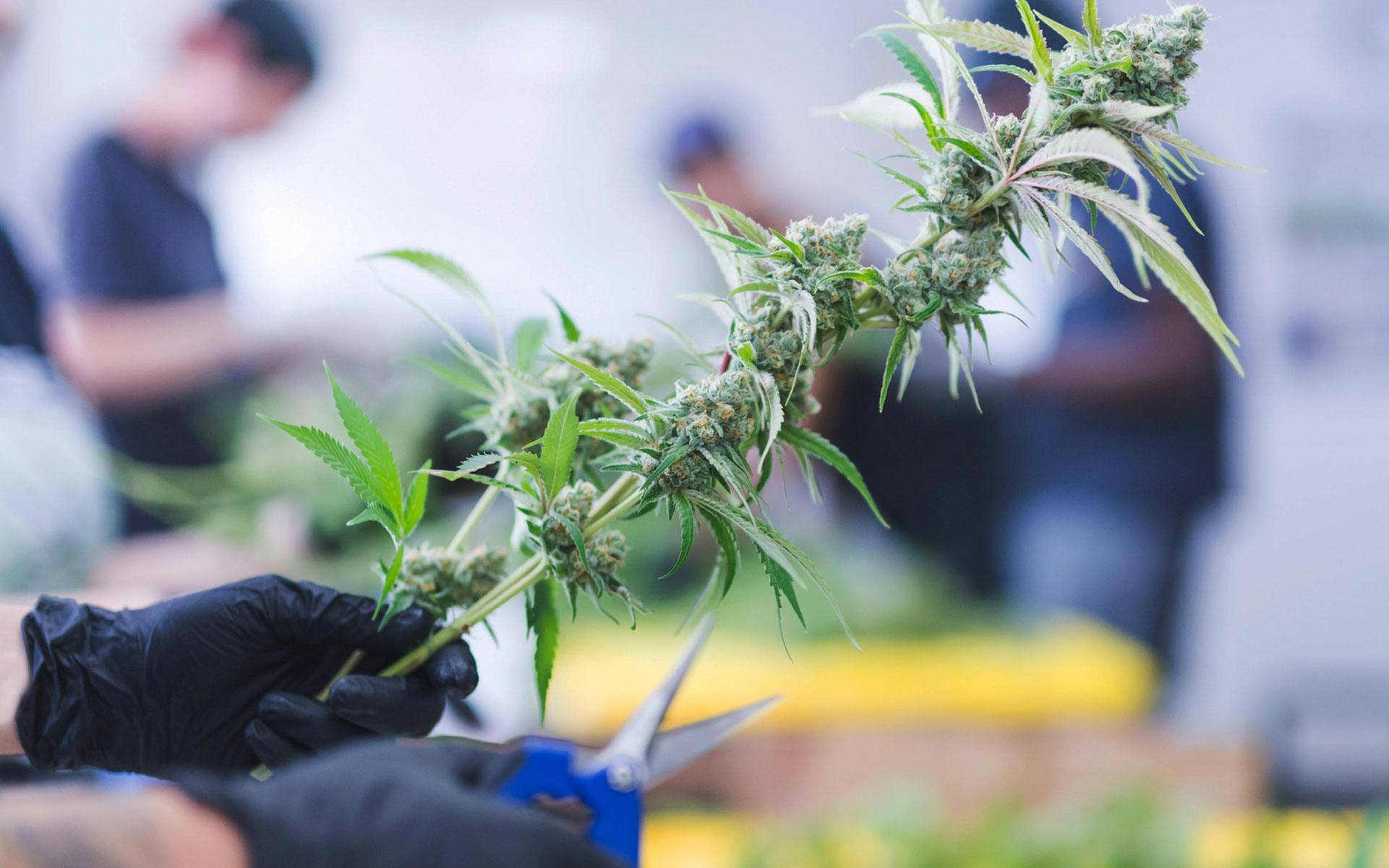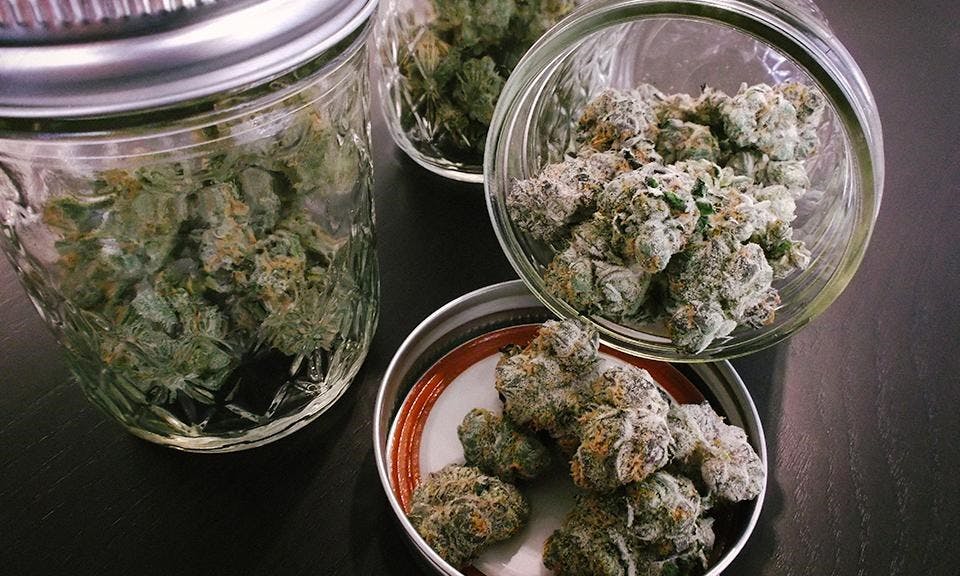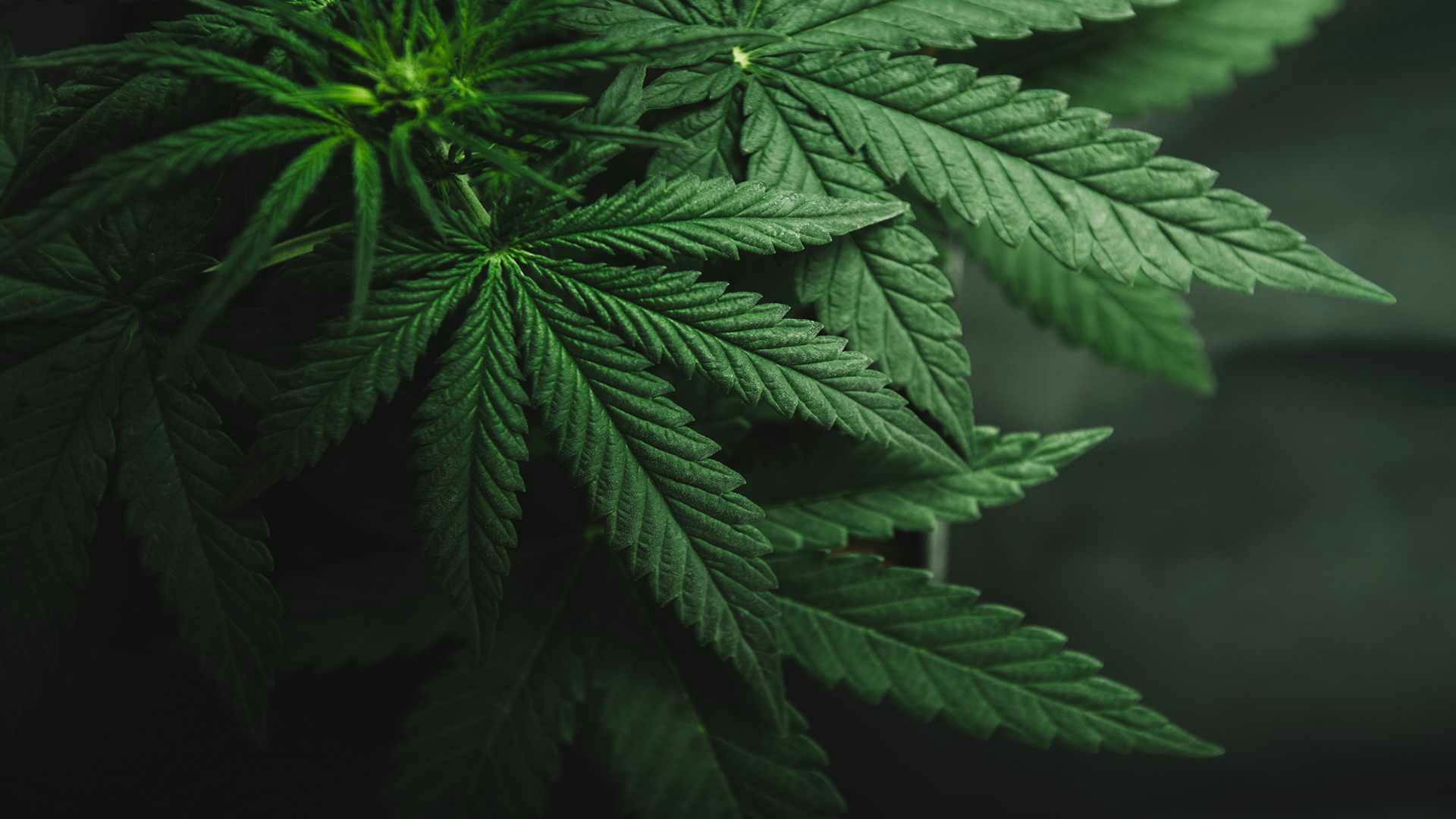
It’s been months since that little weed sprout first popped out of the ground, or you put that delicate clone into some soil. You’ve watched your plants grow and mature, getting bigger and developing buds, and can’t wait to get those buds off the plant and light up.
But not so fast—harvesting cannabis isn’t just cutting down plants and trimming buds; you’ll also need to dry and cure buds before you can smoke them.
There are a few different ways to harvest weed, depending on whether you trim buds wet, straight off the plant, or dry, allowing them to dry first:
- In wet trimming, the plant is cut down, buds are removed off branches—called “bucking”—then trimmed, and then dried, all in one sitting.
- When dry trimming, the plant is cut down and hung to dry for several days; buds are bucked off branches and trimmed when fully dried.
Harvesting is one of the most exciting steps when growing weed, and here’s what you need to know before cutting down your crop.
Overview of how to harvest weed
- Flush plants a week before harvesting
- Determine when to harvest based on trichome color
- Decide if you’ll be wet or dry trimming
- Prepare equipment
- Chop down plants
- Dry and trim plants
Check out Johanna’s full video series on how to grow weed on Leafly’s YouTube.
How to know when to harvest cannabis
It’s important to note that every gardener has a different opinion on when to harvest their cannabis plants—some like to harvest early while others prefer later. When you harvest can also depend on other factors in life, such as your schedule, a job, the weather, etc.
Harvesting weed a week early or late probably won’t be the end of the world, but don’t let your plants sit around much longer than that.
When to harvest cannabis according to trichomes

The best way to tell if your marijuana plants are ripe and ready to harvest, both indoors and outdoors, is to look at:
- Stigma: These hair-like strands that cover buds will turn from white to orange and will start to curl.
- Trichomes: The resinous glands all over the plant will turn from clear to opaque and then amber.
The color and clarity of trichomes will tell you when a plant has reached peak maturity and is ready to harvest.
Grab some seeds for your grow

“ILGM features a wide range of seeds from stellar American growers in addition to their ever-reliable in-house brand.”
– Leafly “Best for Beginners” seed bank pick
We may earn a small commission if you buy through links on this page.
Ripe, healthy trichomes will be sticky and milky white; unripe trichomes will be clear; and overripe or diseased trichomes will be amber or brown. You want to look for milky white trichomes before harvesting.
Shop highly rated dispensaries near you
Showing you dispensaries nearKeep in mind that top colas might reach maturity faster than bottom buds because they receive more light. You may need to harvest a plant when some buds are ripe and others are under-ripe.
Additionally, information from the breeder or grower can be helpful in getting a rough estimate of when a particular strain should be harvested.
Outdoor marijuana
Weed is a warm-season annual, so if growing outdoors, harvest time comes between September and November in the Northern Hemisphere.
There is some variability—growers in Northern California may be able to harvest into November, whereas growers in the Pacific Northwest will likely need to pull their crops down by mid-October, before fall rains set it.
Know your local climate and talk to other growers in your specific area to see when they harvest marijuana.
Tips for determining when to harvest outdoor weed
Strains from regions close to the equator—sativas—need a long, seemingly endless summer to fully ripen, while strains from harsh, cold climates—indicas—tend to finish earlier. That being said, some indicas take a long time to finish and some sativas finish on the early side.
The best time of day to harvest outdoor marijuana plants is in the morning, before the sun blasts them. Ideally, you don’t want them to be wet and dewey, but you don’t want them to under the bright light of the sun, which can degrade terpenes.
You can also harvest at night when the temperature cools off, but the morning is better as plants haven’t been sitting under the sun all day.
Follow the weather
As cannabis buds pack on weight and the season changes from summer to fall, there will be fluctuations in the weather. Depending on your climate, there might be cold snaps or rainstorms.
These aren’t disasters but you do need to keep an eye on the weather and possibly make a game-time decision on when to chop down plants, balancing peak ripeness with conditions that could compromise your harvest.
Harvesting weed in cold temperatures
Most cannabis plants can sail through a light freeze—28-32°F for up to three hours—with no trouble. But a hard freeze, any temps lower or for longer, can spell disaster.
Frost can cause ice crystals to form in plant tissue, damaging their cells. Leaves will appear wilted before turning dark and crispy. The deeper the frost, the more of the plant that will get damaged.
Note that potted plants experience more severe temperature fluctuations than plants in the ground, making the cannabis more susceptible to frost damage.
Rainy harvests
Similar to a cold snap, rain itself isn’t a huge problem, but the duration and severity of the storm is. If it’s going to warm up and dry out quickly, you can leave almost ripe cannabis to weather the storm. If the rain will be there to stay, mold awaits—cut your losses and harvest before things get soggy.
Covering your plants will help, but there will still be moisture in the air. You can cover plants with a few tall stakes and a tarp, just be sure to remove the cover when the cold or rain passes to let plants warm up and get the sun and air they need.
Indoor marijuana
When growing indoors, plants generally get harvested about 7-9 weeks after flipping them into the first stages of flowering. Some strains may take longer, some shorter; it depends on the strain. Indicas usually finish quicker, while sativas longer.
How often do you harvest weed?

Harvesting indoor marijuana
When growing weed indoors, you can harvest as much or as little as you want. The sky—rather, your grow room—is the limit.
Weed can take anywhere from 3-8 months to grow from seed to harvest, so you can fit in as many as four harvests of smaller plants, or one or two harvests of bigger plants each year.
More harvests mean you’ll have fresh, homegrown weed to smoke more often, but it will also be more work in cleaning up the space between harvests, trimming, etc.
You can even fit in more than four harvests a year if you start with clones or autoflower seeds, both of which shave off some weeks of the grow cycle.
Harvesting outdoor marijuana
By and large, cannabis grown outdoors gets harvested once a year. In most climates, seeds or clones will start in the spring, and you’ll harvest in the fall. In some tropical regions, you can squeeze in a second harvest in a year because of the climate.
Autoflowers
You can set up your outdoor weed grow to have more than one harvest a year if you grow autoflower seeds. Autoflower weed plants have a shorter life cycle—they “automatically flower” when they get to a certain age, instead of beginning the flowering stage when sunlight starts to decrease in the sky outdoors.
Because of this, you can start growing a set of autoflowers early in the season, around March or April, harvest them in June or July, and then start growing a second set for harvesting in the fall. You’ll be able to have multiple harvests, but keep in mind that your plants will be smaller because they’re autoflowers.
Light deprivation
Light deprivation, or light deps, are another technique to get multiple outdoor harvests in a year. A tarp is placed over a greenhouse to cut off the amount of light outdoor weed plants receive, giving you the ability to control the flowering cycle of plants. As with autoflowers, this will allow you to fit in multiple outdoor harvests in a season.
The drawback to light deprivation is you have to have a greenhouse and other equipment, and you have to place and remove the tarp every day. If marijuana plants receive too much light on even one day, it can confuse them and ruin their flowering and bud production.
Preparing to harvest marijuana
Check out Johanna’s full video series on how to grow weed on Leafly’s YouTube.
If you’re growing the same strain, you’ll want to harvest all your cannabis plants in the same window of time because they’ll all ripen at the same time.
If you’re growing multiple strains, they may ripen at different times. But you may still want to harvest all strains at once to get trimming done all in one sitting, just keep in mind that some strains might get harvested on the early side and some on the late side.
Before you harvest, you’ll also need to know if you are going to trim wet or dry. Wet trimming involves trimming buds immediately after the plant is cut down, and with dry trimming, chopped plants are hung up to dry for several days before trimming.
It’s also a good idea to flush your plants a week before harvesting—give them only water to clear out the nutrients.
What do trichomes look like when they’re ready to harvest?
Trichomes will be sticky and milky white when ready to harvest.
When looking at trichomes you’ll need a microscope. Handheld microscopes ranging from 30x-100x will work and can be purchased at any growing supply store.
During their change from clear to opaque to amber, trichomes reach their maximum THC content. After that, they begin to break down due to exposure to oxygen and UV rays.
What happens if you wait too long to harvest?
Waiting a week or two after a plant’s peak maturity to harvest isn’t the end of the world, the plant might just lose some THC. Busy schedules or too many plants to harvest and cause growers to delay harvesting plants for a little bit.
If you wait for a long time, several weeks or more, the plant will likely dry out and the buds shrink. The plant may start to rot and develop mold, especially in an outdoor environment and in cold climates.
Equipment needed to harvest cannabis
To harvest weed, you’ll need the following tools:
- Scissors (for trimming buds)
- Pruners (helpful for big branches)
- Comfortable chair and area
- A clean surface, like a table
- Tray or bowl
- Rubbing alcohol
- Rags
- Clothes that can get dirty and sticky
- Entertainment
- Optional: Non-powdered latex gloves
Scissors

Make sure scissors are ergonomic and will fit comfortably in your hand, as you will be holding these bad boys for quite a while. With time, these scissors will get very sticky, so get a pair that will clean easily, or buy two pairs so you can switch between them.
There are many types of scissors you can buy; some are spring-loaded, some not. Beginners often go for spring-loaded ones because they seem quicker.
However, a lot of trimmers recommend Chikamasa scissors—these are not spring-loaded and might take a day or two to get used to, but you will soon notice the precision and speed they provide.
Pruners
You may also want to invest in a larger pair of shears for cutting branches. Save the scissors for the more precise work.
Comfortable chair and area
Give yourself plenty of space and have an ergonomic setup so you can settle in for a long trim. Pick a cool place with plenty of light, and try to stay away from places with excess dust, hair, or particulates, which can contaminate the weed.
The longer you sit, the more work you get done, so find a comfy chair. Avoid anything that makes you hunch over and compresses your lower back.
Tray/bowl and a clean surface
Many trimmers opt for trimming trays because they are much easier to transport and can make a great lap companion. We recommend something that has a screen for collecting kief. The simpler the design the better.
You can also just trim onto a flat table and put your finished buds in a bowl.
Whatever you choose, make sure the surface is easy to clean.
Rubbing alcohol and rags
Trimming scissors will inevitably get gunked up with resin, so you’ll need to clean them or switch them out with a fresh pair periodically. Keep a rag and a cup with rubbing alcohol handy.
Clothes that can get dirty and sticky
Wear old clothes you don’t care about or an apron. Better yet, wear a silk apron—the resin won’t stick to silk and your laundry will thank you.
Gloves are also great to keep your hands resin-free. If you don’t like trimming with gloves on, you can rub coconut or olive oil on your hands to prevent resin buildup.
Entertainment
A long trim session can seem even longer without anything to pass the time. Staying entertained is crucial to your sanity when trimming. Anything that doesn’t require visual attention is recommended, such as music, podcasts, audiobooks, and stand-up comedy.
Tips for a successful marijuana harvest
Once your plants are ready for harvesting and you have all your equipment, it’s time to chop down your plants.
With dry trimming, chopped plants are hung up to dry for several days before trimming.
Wet trimming involves trimming buds immediately after the plant is chopped down.
Either way, to chop down plants, grab a large pair of shears and start cutting off big branches, making sure to be delicate with the buds. If plants are small, you may be able to cut them directly at the base, above the soil.
If dry trimming, it’s helpful to cut branches in a way to give them a hook on one end, making it easy to hang them. If wet trimming, cut branches so they’re easy to handle and snip buds off of.
- Make sure to flush your plants with only water, no nutrients, for about a week before harvesting
- Check trichomes on plants to make sure they’re ready to get chopped down
- Wear clothes that can get dirty—harvesting weed is sticky
- Keep shears and scissors sharp
- It’s good to harvest before plants get too hot—outdoors, this means harvesting in the morning; indoors, harvest soon after the lights come on
- If growing different strains, some plants may be ready to harvest before others
- If wet trimming, be sure to trim buds immediately after chopping down plants
Now that you’ve harvested your weed, what comes next? Learn how to trim, dry, and cure your marijuana harvest.
Johanna Silver and Trevor Hennings contributed to this article.
Read more of Leafly’s guide to growing marijuana
- How to grow weed: Basics of growing marijuana
- 4 stages of marijuana plant growth
- Marijuana plant anatomy
- How to grow weed indoors
- How to grow marijuana outdoors
- Cannabis seeds 101: How to grow marijuana from seed
- How to clone cannabis plants
- Marijuana seedling and plant care
- How to harvest marijuana plants
- Troubleshooting common cannabis plant problems
- Buyer’s guides for cannabis seeds and growing equipment
- How to grow marijuana using hydroponics, aeroponics, or aquaponics
Ready to start growing your own marijuana?
By providing us with your email address, you agree to Leafly's Terms of Service and Privacy Policy.


